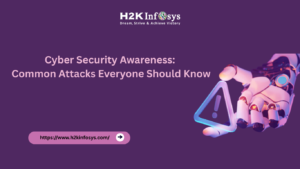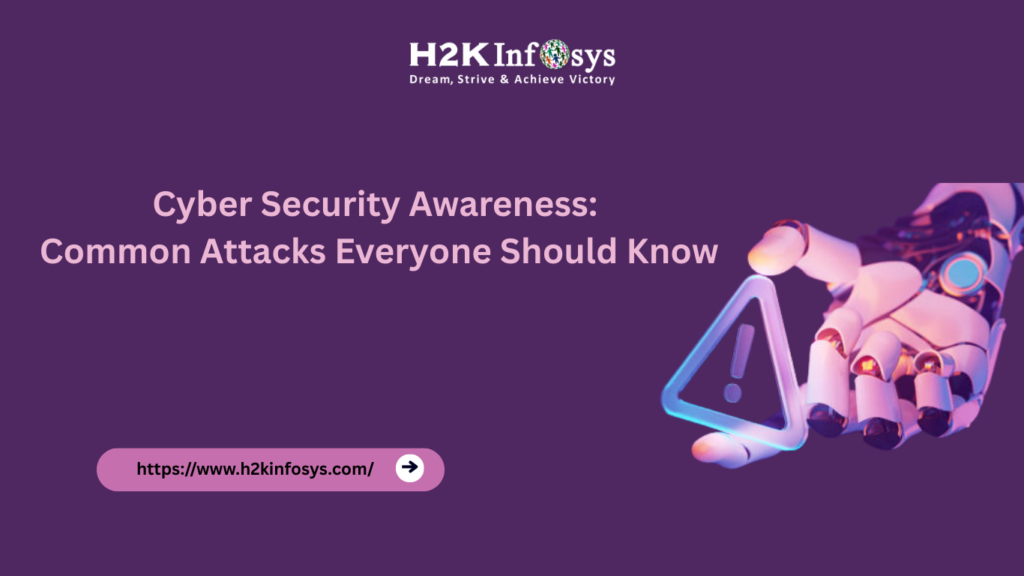Introduction: The Overlooked Root of Most Network Failures
Have you ever tried accessing a website only to be met with errors like “DNS server not responding” or “This site can’t be reached”? These common issues often stem from one underestimated area: DNS Fundamentals.
DNS (Domain Name System) is the backbone of the Internet. It connects human-readable domain names to machine-readable IP addresses. But when DNS misfires, the entire user experience breaks down. More importantly, weak or misconfigured DNS settings are a major security risk.
This is why Cyber security training and placement programs at H2K Infosys emphasize DNS in their curriculum. By understanding DNS Fundamentals, learners are better prepared to secure enterprise networks and fix errors that could otherwise halt business operations.
What Are DNS Fundamentals?
DNS Fundamentals refer to the core principles, architecture, and protocols that define how the Domain Name System operates. Understanding these basics is essential for both aspiring and experienced cybersecurity professionals.
Key Elements of DNS Fundamentals:
- Domain Name: A friendly website address like example.com.
- IP Address: The server’s actual address, such as 192.168.1.1.
- DNS Resolver: A client-side tool that initiates and manages DNS queries.
- Root Server: First point of contact in DNS resolution.
- TLD Server: Top-Level Domain server, e.g., .com, .org, etc.
- Authoritative Name Server: The Final authority that provides the correct IP.
- TTL (Time to Live): How long the DNS record stays in the cache.
In a well-designed Cyber security course with placement, learners gain a detailed understanding of these elements and how they work together to resolve domain names accurately.

Why DNS Matters in Cybersecurity
You might think DNS is purely a networking topic, but in reality, it is a cybersecurity cornerstone.
Here’s Why:
- DNS Spoofing: Attackers redirect users to malicious sites.
- DNS Tunneling: Data is stealthily moved in and out of networks via DNS queries.
- Amplification Attacks: Used in DDoS attacks to overload target servers.
By learning DNS Fundamentals, you not only become proficient in handling network errors but also gain the skills to detect and prevent serious cyber threats. This is a key reason cyber security training near me programs now include DNS-focused labs.
How DNS Works: The Lifecycle of a Query
Understanding DNS Fundamentals means knowing exactly what happens when you enter a URL in your browser. Here’s a simplified breakdown:
- Check Local Cache: OS/browser checks stored entries.
- Query DNS Resolver: If not found, the query is passed to a DNS resolver.
- Contact Root Server: Directs the query to the TLD server.
- Query TLD Server: Sends the query to the authoritative name server.
- Authoritative Response: The actual IP is returned.
- Website Loads: Browser uses IP to connect to the site.
Each of these steps represents a checkpoint where things can fail. That’s why DNS Fundamentals are essential for those enrolled in cyber security course and job placement programs.
Common DNS Errors and Solutions
Let’s walk through some real-world DNS issues and how to resolve them using DNS Fundamentals.
1. DNS Server Not Responding
Problem: No response from the DNS server.
Fix:
- Switch to Google DNS: 8.8.8.8
- Run: ipconfig /flushdns
- Restart the DNS client service
2. DNS_PROBE_FINISHED_NO_INTERNET
Problem: System can’t resolve DNS queries.
Fix:
- Reset IP and DNS:
netsh int ip reset
ipconfig /renew- Change DNS settings manually
3. Website Loads on Some Devices But Not Others
Problem: Local DNS cache inconsistency
Fix:
- Clear browser and OS DNS cache
- Use nslookup or dig for manual resolution
These troubleshooting skills are taught practically in online classes cyber security, where learners practice resolving DNS errors in virtual labs.

Real-World Case Study: DNS Misconfiguration and Business Downtime
Scenario:
An e-commerce company experiences sudden traffic drops. The site loads fine from some regions but not others.
Investigation Using DNS Fundamentals:
- Used nslookup and tracert to trace DNS paths.
- Found stale cache in one of the company’s DNS servers.
- TTL values were too high, delaying DNS updates across regions.
Fix:
- Lowered TTL to 300 seconds.
- Implemented DNSSEC for improved validation.
- Added fallback DNS providers.
This real-life example proves that DNS Fundamentals can save businesses from critical downtime—a lesson emphasized in H2K Infosys’ cybersecurity training and placement courses.
Tools Every Cybersecurity Learner Should Master
To truly understand DNS Fundamentals, learners must use diagnostic tools regularly:
| Tool | Purpose |
| nslookup | Basic DNS lookup |
| dig | Advanced DNS query tool |
| tracert | Traces route to the DNS server |
| Wireshark | Analyzes DNS packet traffic |
| ipconfig | View and flush DNS cache |
These tools are integrated into H2K Infosys’ cyber security training courses to provide hands-on practice for real-world challenges.
How DNS Fundamentals Shape Your Cybersecurity Career
Here’s how DNS Fundamentals make you more employable:
- Network Security Roles: Diagnose and secure DNS configurations.
- SOC Analysts: Monitor logs for DNS tunneling or spoofing.
- Penetration Testers: Exploit misconfigured DNS records during assessments.
- Cloud Security Engineers: Manage DNS at scale in hybrid environments.
This is why Cybersecurity training and job placement programs are increasingly focusing on DNS troubleshooting and attack prevention techniques.
Best Practices Derived from DNS Fundamentals
To avoid costly mistakes, here are the best practices based on DNS Fundamentals:
- Always Configure Backup DNS Servers
- Use DNSSEC to Prevent Spoofing
- Monitor Logs for Unusual DNS Queries
- Set Appropriate TTLs to Avoid Stale Records
- Perform Regular DNS Health Checks
These practices ensure both performance and protection, a balance that’s taught in cyber security course with placement programs.
Step-by-Step Lab: Trace a DNS Query Using nslookup
Here’s a hands-on tutorial from H2K Infosys’ virtual lab environment:
Step 1: Open Terminal or CMD
Step 2: Type
nslookup www.h2kinfosys.comStep 3: Observe Output
- Note the DNS server being queried
- Look at the IP returned
- Examine the TTL value
This lab reinforces DNS Fundamentals while giving students a taste of real-world diagnostic work.
Key Takeaways
- DNS Fundamentals help you resolve issues and identify vulnerabilities fast.
- Most network outages and phishing attacks start at the DNS level.
- Understanding DNS tools and attack vectors strengthens your cybersecurity skillset.
- Real-world labs based on DNS Fundamentals prepare you for incident response, monitoring, and network hardening.
- DNS knowledge applies across job roles—from entry-level analyst to senior engineer.
Conclusion: Build Your Career on a Strong DNS Foundation
Ready to solve real-world network errors and strengthen your cybersecurity skills? Join H2K Infosys’ Cybersecurity training and placement programs and master DNS Fundamentals through hands-on labs, expert instruction, and job-ready training. Secure your future in cybersecurity one DNS query at a time.


























